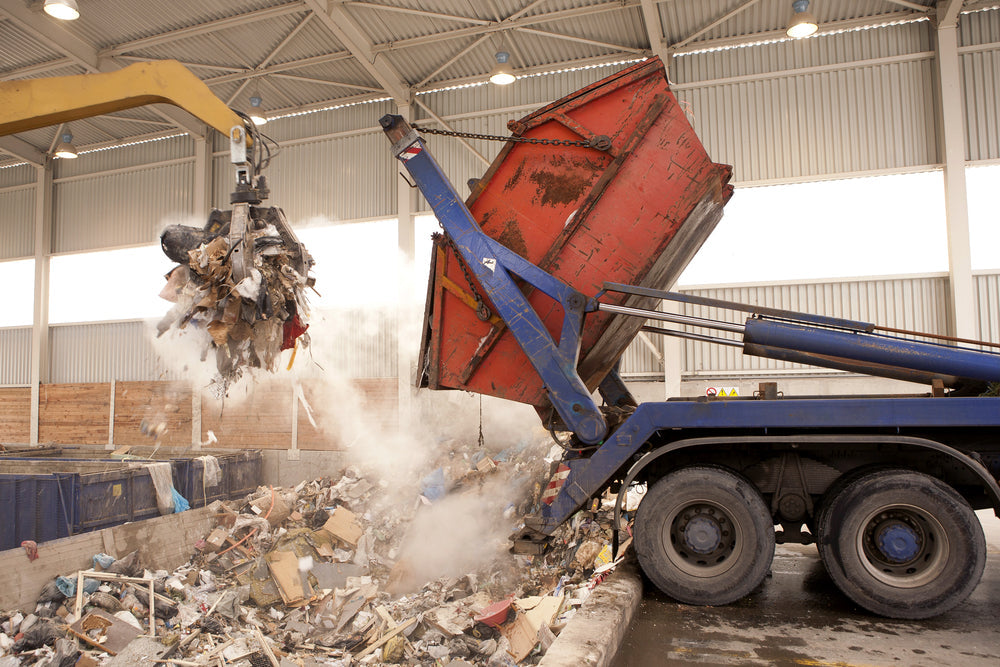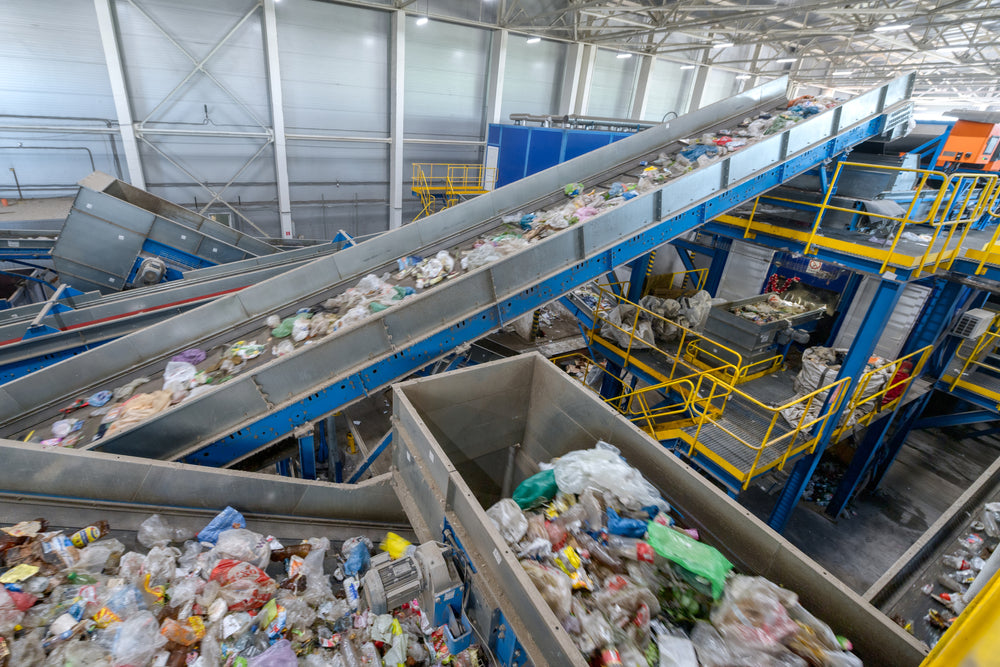Cannabis Waste Management: 4 Eco-Friendly Changes for Sustainability
The United States has a broken waste management system. Most consumer goods are package...

The United States has a broken waste management system. Most consumer goods are packaged with materials that will remain in landfills for hundreds of years, degrading into toxic pieces. The cannabis waste management system does not biodegrade, compost, recycle, or reuse most packaging.
As it grows, the cannabis industry increasingly contributes to this unsustainable waste management system. The cannabis industry must take steps to advance the use of sustainable packaging that promotes economic circularity. The development of a circular economy in the cannabis industry will ultimately overcome the challenges of an overwhelmed cannabis waste management system.
Sana Packaging is a sustainable packaging company that believes in creating a circular cannabis economy. We know how the cannabis industry can stop contributing unsustainable packaging materials to our overburdened waste management system and achieve a circular economy. Here are four waste management system improvements to enable the sourcing of sustainable packaging materials and the creation of a more circular cannabis economy.
1. Promote Recycling and the Use of Recycled Packaging for Cannabis Products
The cannabis industry generates a substantial amount of single-use plastic packaging annually, contributing to the waste system. The cannabis industry should utilize more recycled packaging materials to promote a circular packaging economy. Emphasizing eco friendly packaging and sustainable packaging solutions can drive this change. How does the cannabis industry utilize recycled packaging materials?

The cannabis industry should minimize using newly manufactured petroleum-based plastic packaging materials. "Virgin" petroleum-based plastic is the most commonly used packaging material in the cannabis industry, and most go unrecycled after use (less than 10% of 8 billion tons). Polypropylene (PP) is the most popular plastic used in the industry, and only 1% of this material is recycled.
Packaging manufactured with mixed materials prevents recycling. Plastic packaging materials such as child-resistant plastic caps with liners made from a different material type are near impossible to recycle. The cannabis industry needs a sustainable alternative to plastic packaging that contains mixed materials.
Recycled plastic is a sustainable packaging material that advances a circular cannabis economy. Cannabis brands and retailers are using ocean-bound plastic to package various products. Sana Packaging produces recycled plastic marijuana packaging for flower, prerolls, vape cartridges, concentrates, edibles and topicals using materials reclaimed from waterways. Ocean-bound plastic is a sustainable alternative to virgin petroleum-based plastic.
2. Educate Consumers on Compostable and Biodegradable Packaging for Marijuana and the Processing Infrastructure Required
Your customers require knowledge about compostable and biodegradable packaging, as well as the industrial infrastructure needed to process it. Consumers are often confused about the differences between compostable and biodegradable packaging and how to dispose of them after use. Educating customers on compostable and biodegradable packaging will encourage the development of these sustainable materials and the necessary infrastructure to process them.

Consumers should know how to compost cannabis packaging. Compostable packaging requires industrial composting infrastructure. As it stands, only 11% percent of the U.S. population has access to industrial composting. The cannabis industry can educate consumers on composting facilities in their area. Furthermore, most industrial composting infrastructure in the United States is only set up to process food and yard waste, not packaging waste.
The public is unaware that most biodegradable cannabis packaging does not naturally degrade in the environment. Inks, colorants, and coatings prevent paper cannabis packaging from naturally biodegrading. Furthermore, "biodegradable" packaging made with petroleum-based resins degrades into micro plastics and is not good for landfill stability. Truly biodegradable packaging would leave no trace of chemicals after degradation in a natural environment, thereby supporting sustainable waste management practices.
While Sana Packaging produces 100% plant-based packaging made from hemp and other plants, we do not market these products as biodegradable because that is misleading.
Your customers must understand the difference between compostable and biodegradable packaging along with the difficulty associated with properly recovering and processing this type of packaging with our current waste management infrastructure.
3. Address Regulatory Compliance Issues That Impede the Development of Sustainable Cannabis Packaging
The cannabis industry should advocate for the amendment of regulations that hinder the pursuit of sustainable business practices. Regulatory compliance for cannabis packaging encourages the excessive use of unsustainable materials. Following New York's lead, the cannabis industry and regulators must partner to develop regulations stimulating a more circular cannabis economy.
Regulations can also hinder the cannabis industry from recycling most packaging. For instance, recyclers in some states are weary of collecting and processing cannabis packaging because of the liability associated with potential cannabis "residue" on the packaging. This is a significant barrier to recycling and the development of a more circular cannabis economy.
Regulations concerning child-resistant cannabis packaging can be a barrier to achieving a more circular economy. Child-resistant packaging regulations encourage unsustainable materials like virgin petroleum-based plastic and the use of mixed materials to design the child-resistant locking mechanisms. Child-resistant packaging can also result in using more material than is truly necessary to package a product.
This is another significant barrier to reducing the impact of cannabis packaging waste and we believe the cannabis industry should have a frank conversation about whether non-activated cannabis products truly require child-resistant packaging.
4. Support Development of Environmentally Sustainable Marijuana Packaging with Industry Accountability and Local Resilience
The cannabis industry should take the lead in supporting packaging and sustainability and hold itself accountable. The cannabis market can promote regional sourcing of packaging materials to support environmental sustainability. Cannabis consumers want to see brands take the initiative to encourage a more circular cannabis economy.
The cannabis industry has the opportunity to introduce accountability into best practices as it continues developing. Cannabis brands and retailers that take environmental sustainability will also be able to differentiate themselves in a competitive market. Leading cannabis brands and retailers are supporting the development of a more circular cannabis economy.
Overseas sources of packaging materials may come at a low cost, but this also comes with a hefty carbon footprint. Whenever possible, cannabis brands and retailers should source domestically manufactured packaging. Sana Packaging manufactures all its products domestically and local resilience is a key component of a more circular economy.

How to Achieve Ultimate Environmental Sustainability with a Circular Cannabis Packaging Economy
The cannabis industry will achieve ultimate environmental sustainability by creating a circular economy. A circular economy creates a closed-loop system where all packaging is plant-based, reusable or recyclable and is actually composted, recycled, or reused in practice. Sana Packaging is committed to the pursuit of a circular economy.
Click here to learn more about how Sana Packaging can help your cannabis business source sustainable cannabis packaging.
